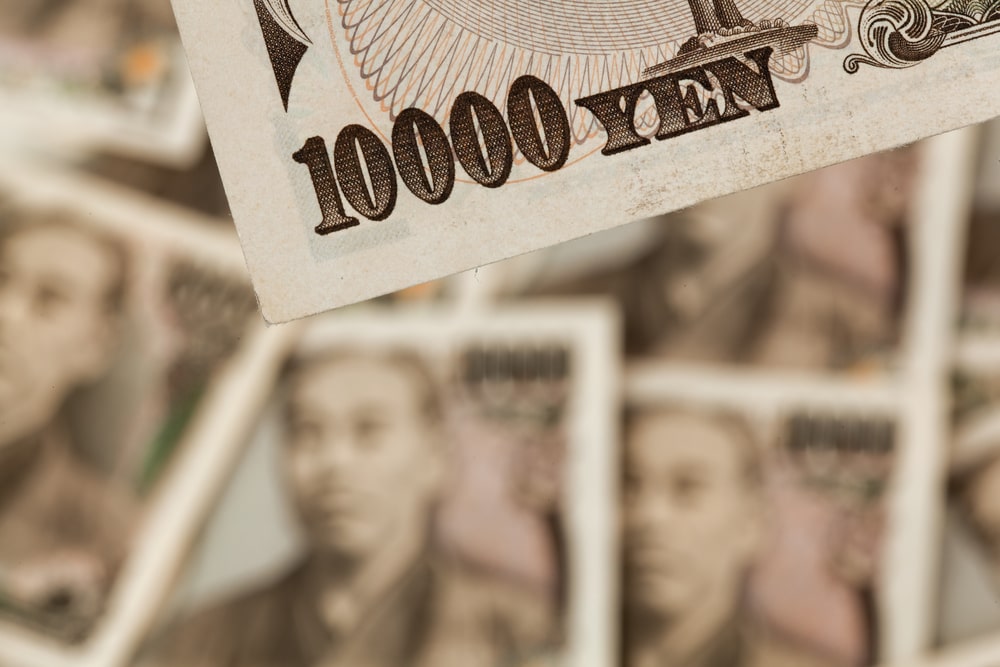

Summary
- The Japanese yen (JPY), long seen as a haven, is the second-worst-performing G10 currency this year, down about 2.5% against the US dollar (USD).
This article is only available to Macro Hive subscribers. Sign-up to receive world-class macro analysis with a daily curated newsletter, podcast, original content from award-winning researchers, cross market strategy, equity insights, trade ideas, crypto flow frameworks, academic paper summaries, explanation and analysis of market-moving events, community investor chat room, and more.
Summary
- The Japanese yen (JPY), long seen as a haven, is the second-worst-performing G10 currency this year, down about 2.5% against the US dollar (USD).
- The yen has suffered mostly from the maintenance of an ultra-stimulative monetary policy stance of the Bank of Japan (BoJ).
- Against the bulk of other G10 currencies, expect the yen to reverse a portion of its 2023 losses, driven by haven demand and an end to tightening cycles elsewhere.
Market Implications
- Bullish JPY trade-weighted index (TWI) – although down ~3.5% year-to-date (YTD), this performance should improve in the coming months, especially on a recession or increased geopolitical tensions.
- Bearish USD/JPY – expect the 2023 rise to pull back nearer the bottom of its YTD ~127/137 range.
- Bearish EUR/JPY – up 5% so far in 2023, the pair hovers near its YTD high. Although we are generally bullish the euro, the pair will likely retrace toward the lower end of the 2023 range.
- Bearish GBP/JPY – although up ~7% YTD, we expect a pullback near the September low at ~155 in the coming months.
- Bullish CHF/JPY – expect continued rises to near ~155 as haven demand for CHF should outpace that for the JPY.
Introduction
In what has been a topsy-turvy 2023 in the global rates space, developed market FX has been comparatively orderly. Despite this, there have been winners and losers in G10 FX.
One of the poorest-performing currencies so far this year has been the yen. This has been largely due to the BoJ maintaining a sub-zero policy rate, in addition to the continued employment of yield curve control (YCC) by Japanese policymakers.
JPY underperformance should (at least partially) reverse in the coming months. At first, this will probably be driven by a US-led recession, which will drive haven flows to Japan.
If geopolitical tensions rise, the yen should also benefit against most of its G10 peers, again on larger haven flows.
Moreover, as the tightening cycles in the US, Eurozone and in the UK end, the relative monetary policy disadvantage for the JPY should hinder the currency less, even if the BoJ stands pat.
This means that the currently wide interest rate differentials should narrow between Japan and its G10 peers, perhaps as early as in the next 3-6 months, benefitting the yen.
Trade-Weighted JPY Has Struggled in 2022-2023
On a trade-weighted basis, the yen has struggled since the beginning of last year. From then until now, the Deutsche Bank JPY TWI is down about 12.5%.

The main catalyst is widening interest rate differentials, especially with the US.
The yen’s slide accelerated in March 2023. From then until its trough in October, the JPY TWI declined about 18.5%. It has since rebounded about 6%, coinciding with the broader decline in the USD index (DXY).
Since early 2022, the JPY TWI’s decline has come alongside the BoJ keeping rates on hold as the US, Eurozone and other G10 countries have undergone hiking cycles.
BoJ Policy Has Dragged on the JPY
Over the past 15 months or so, the US Federal Reserve (Fed) has raised rates by 500bp. In the Eurozone, the European Central Bank (ECB) has raised rates by 375bp. In contrast, the BoJ has kept its policy rate at -0.10%, unchanged since 2016.

The BoJ, through keeping its policy rate below zero and deploying YCC, has stifled any volatility in JPY yields and kept them well below G10 counterparts.
In the 10-year segment of the curve this year, Japanese Government Bonds (JGB) have traded in a ~28bp range, while the US and German 10-year yields have both traded in a ~75bp range. US and German 10-year yields are now 303bp and 188bp above Japan’s, respectively.
It is the same in the 2-year part of the curve – JGBs have traded in a ~13bp range, while the US has traded in a ~130bp range, and Germany in a ~100bp range. US and German 2-year yields are 396bp and 262bp above Japan’s, respectively. Japan’s 2-year yield is below 0%.
BoJ Tweaks Policy and Changes Leadership
Last month, BoJ leadership changed from the retiring Governor Haruhiko Kuroda to the new Governor Kazuo Ueda.
In one of the final acts under Kuroda’s leadership, in December last year, the BoJ tweaked its YCC policy. Before then, YCC allowed 10-year Japanese yields to fluctuate within a band of -0.25% to 0.25%.
The central bank widened this band in December, allowing the 10-year yield to trade between -0.5% and 0.5%. This move triggered near-term volatility in Japanese bond and equity markets.
Since then, though, Japanese yields have been moribund within the wider band. Rather than heralding broader monetary policy moves, the band’s widening has not been a game-changer for the BoJ. It has amounted to window dressing.
At the first meeting on 28 April after Ueda assumed governorship, the BoJ kept policy unchanged. The central bank announced a policy review at that meeting, but the planned timeframe for the review is about 12-18 months.
This effectively amounts to Japanese policymakers buying time and kicking the can down the road.
Ueda also rebuffed the notion of a change in the current ultra-accommodative monetary policy stance this week, saying the BoJ would end YCC only when Japan sees sustainable and stable 2% inflation.
So if you expect the BoJ to pre-emptively tighten policy, you will be disappointed. Current monetary policy will likely be maintained for the foreseeable future.
A Look at Four JPY Pairs
This ‘as-you-were’ stance has prevented a material yen rally over the past 15-18 months. However, the unfavourable interest rate differentials driving the JPY slump may have peaked, with other G10 central banks at or near the end of their tightening cycles.
Moreover, if the US economy slumps, and/or geopolitical tensions increase, expect haven flows to Japan to increase, reversing some of the yen’s weakness. Increased geopolitical tensions should also trigger haven flows to the JPY.
We examine four key JPY pairs given the increased likelihood of these changing dynamics.
USD/JPY
USD/JPY has traded in a broad 127/137 range so far this year and is currently between the middle and top of that range.

From Q1 2022 to the dollar’s peak in Q4, the contrasting monetary policy stances of the Fed and BoJ largely drove the rise. While the Fed was aggressively tightening, the BoJ was maintaining the ultra-loose monetary policy of most of the last decade.
On a US-led recession, we expect USD/JPY to pull back to the lower end of the YTD 2023 range.
The yen has previously strengthened during an economic downturn, so we can expect a similar reaction next time. For example, during the GFC from February 2007 to September 2009, USD/JPY slumped from ~118 to ~90.
We expect the next recession to be milder than the GFC and the USD/JPY to be much more subdued. But we still expect downward pressure on the pair, especially if it is coupled with the end of the Fed’s hiking cycle, which the market is now pricing.
More importantly, the widening interest rate differentials, which have driven USD strength, will narrow if markets are correct in pricing Fed rate cuts this year.
EUR/JPY
EUR/JPY has traded in a ~138/151 range YTD, after rising through much of 2022. As with USD/JPY, the pair currently trades between the middle and top of that range.
With the ECB also embarking on a tightening cycle last year, a similar monetary policy dynamic drove price action in EUR/JPY, with the pair gaining throughout 2022 and into this year.

The EUR interest rate market is still pricing additional tightening, but the ECB’s Joachim Nagel said this week that the central bank is in the final stretch of its hiking cycle.
As with the USD, this will halt the increase in interest rate differentials supporting EUR/JPY.
In a recession, we would also expect the yen to gain against the euro. During the above GFC period, EUR/JPY fell from ~156 to ~132.
While we are generally constructive on many euro crosses, we think that playing euro upside via EUR/JPY is suboptimal.
GBP/JPY
GBP/JPY is another pair likely to see downside retracement in the coming months, like USD/JPY and EUR/JPY.
GBP/JPY has traded in a ~156/~172 range YTD, now hovering near the top. As with the EUR and USD, interest rate differentials have largely driven gains against the JPY, with the BoE hiking materially from last year.

Like the Fed and ECB, however, the BoE tightening cycle is almost over. While the market still expects some hiking, most has already occurred.
In addition to GBP’s interest rate advantage ending, we also expect sterling to underperform the yen in an economic slowdown. During the GFC period, GBP/JPY fell from ~231 to ~148.
A Bloomberg survey reported this week that the UK will suffer the most out of all G7 nations this year, with the biggest decline in living standards. This will weigh on the UK economy and currency.
This aligns with our bearish pre-disposition towards the pound – recently reiterated by Henry. Expect GBP/JPY to be one of the sterling currency pairs to drop the most.
CHF/JPY
We looked at CHF/JPY last week but maintain our view: the franc is one of the few currencies that should outperform the yen if haven demand rises.

Recent price action is instructive for the coming months. Since the Ukrainian War began, CHF/JPY has risen over 20%. And CHF/JPY is up about 6.5% YTD.
This dynamic of rising CHF/JPY amid economic and geopolitical uncertainty is poised to continue through 2023. CHF/JPY printed an all-time high recently. Expect a repeat later this year, with upside momentum to continue.
Conclusion
Unfavourable interest rate differentials have driven JPY downside since developed market central banks began their tightening cycles last year. The BoJ, by contrast, has broadly kept monetary policy unchanged, maintaining a sub-zero policy rate and YCC.
We expect the yen to reverse some of the weakness of the past 15-18 months. The catalyst will mainly be haven flows into Japan, driven by a US-led recession and/or heightened geopolitical tensions.
This should see the yen retrace a portion of its losses versus the USD, EUR and GBP, as the yen tends to outperform these currencies during material economic downturns. An exception will probably be CHF, which is an even more attractive haven than JPY.
The end of other G10 tightening cycles should also help JPY, as the unfavourable interest rate differentials weighing on the yen should start to narrow. Even if the BoJ keeps policy the same, the bulk of the JPY rates disadvantage is probably over.
